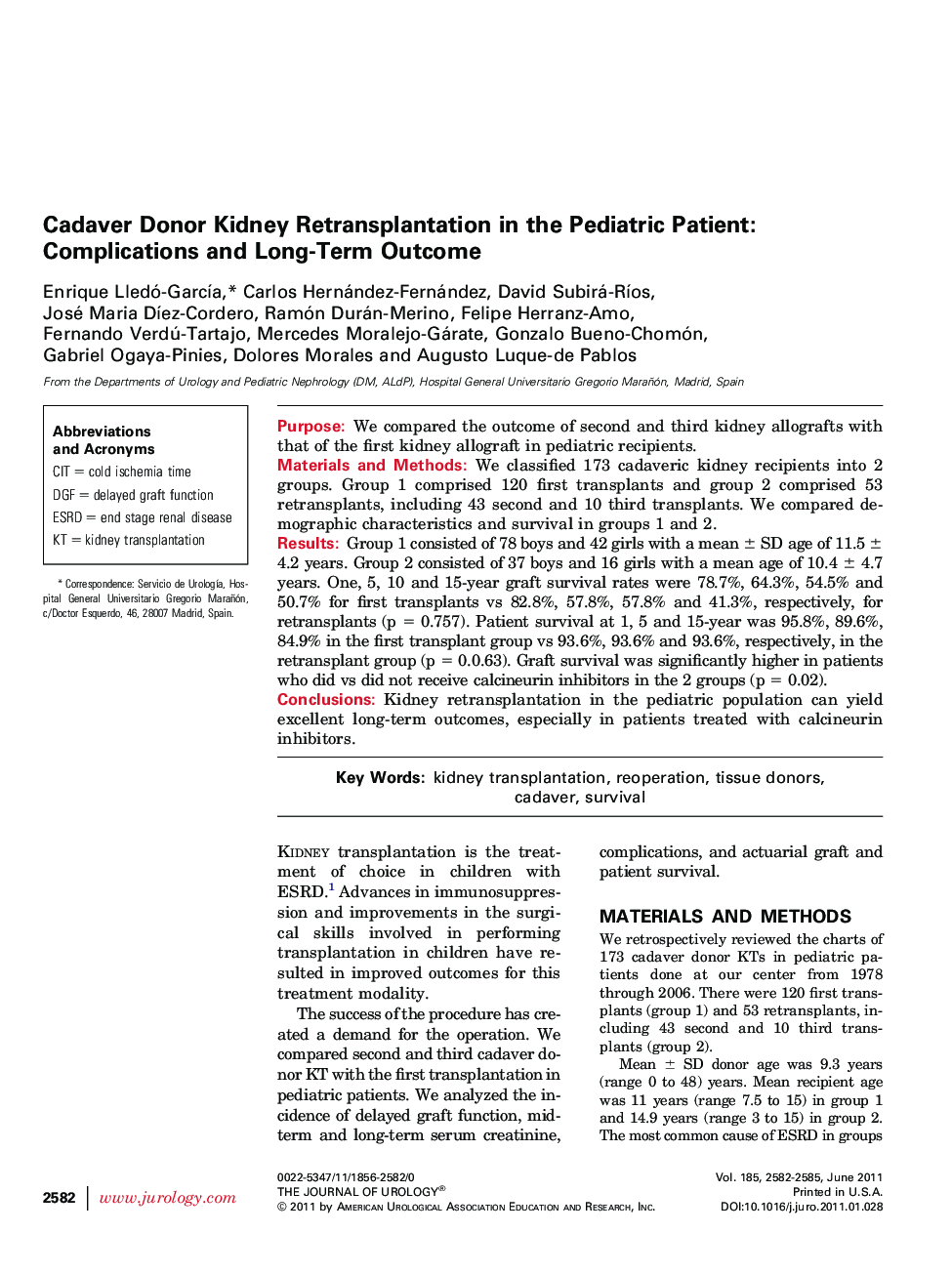| Article ID | Journal | Published Year | Pages | File Type |
|---|---|---|---|---|
| 3866452 | The Journal of Urology | 2011 | 4 Pages |
PurposeWe compared the outcome of second and third kidney allografts with that of the first kidney allograft in pediatric recipients.Materials and MethodsWe classified 173 cadaveric kidney recipients into 2 groups. Group 1 comprised 120 first transplants and group 2 comprised 53 retransplants, including 43 second and 10 third transplants. We compared demographic characteristics and survival in groups 1 and 2.ResultsGroup 1 consisted of 78 boys and 42 girls with a mean ± SD age of 11.5 ± 4.2 years. Group 2 consisted of 37 boys and 16 girls with a mean age of 10.4 ± 4.7 years. One, 5, 10 and 15-year graft survival rates were 78.7%, 64.3%, 54.5% and 50.7% for first transplants vs 82.8%, 57.8%, 57.8% and 41.3%, respectively, for retransplants (p = 0.757). Patient survival at 1, 5 and 15-year was 95.8%, 89.6%, 84.9% in the first transplant group vs 93.6%, 93.6% and 93.6%, respectively, in the retransplant group (p = 0.0.63). Graft survival was significantly higher in patients who did vs did not receive calcineurin inhibitors in the 2 groups (p = 0.02).ConclusionsKidney retransplantation in the pediatric population can yield excellent long-term outcomes, especially in patients treated with calcineurin inhibitors.
